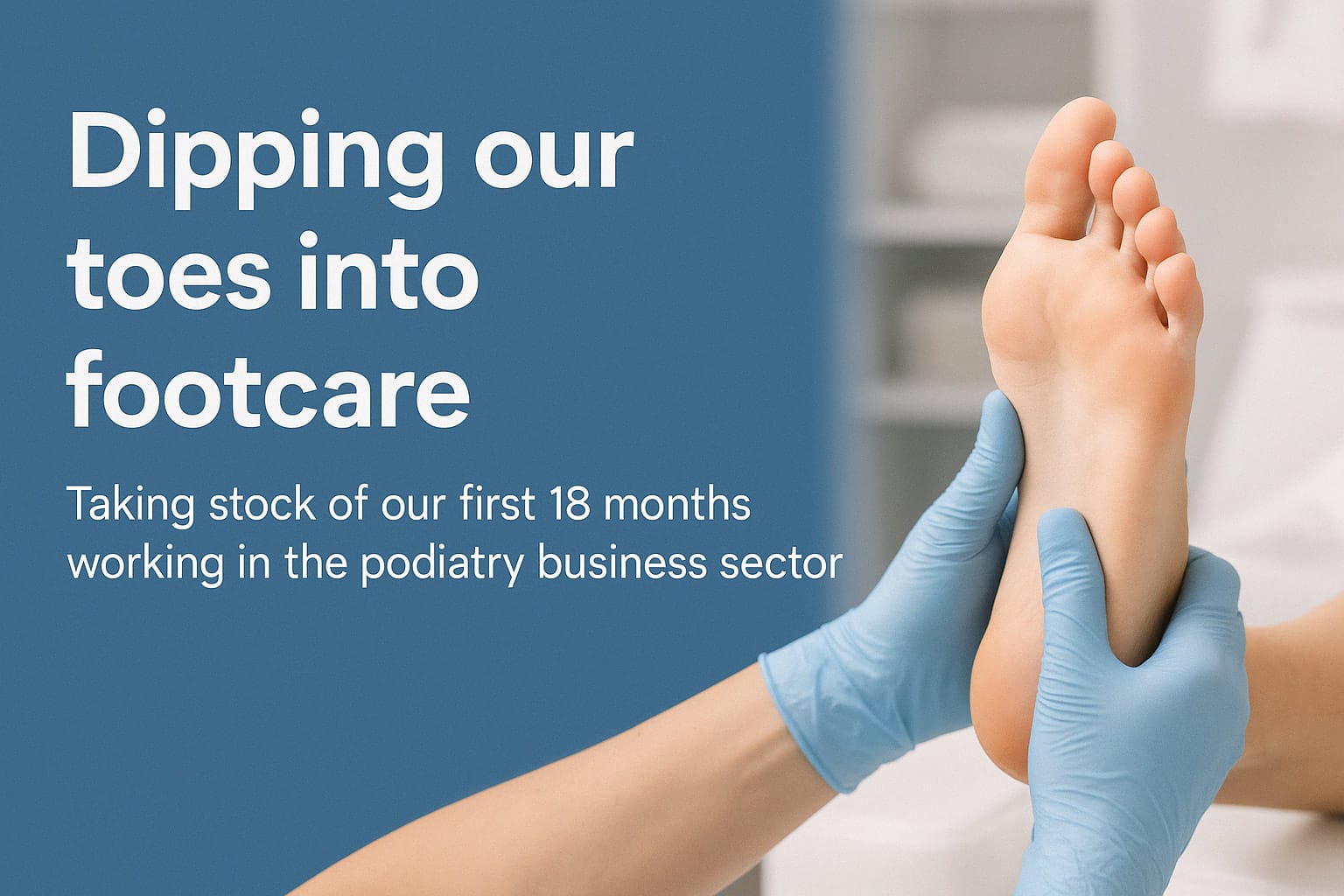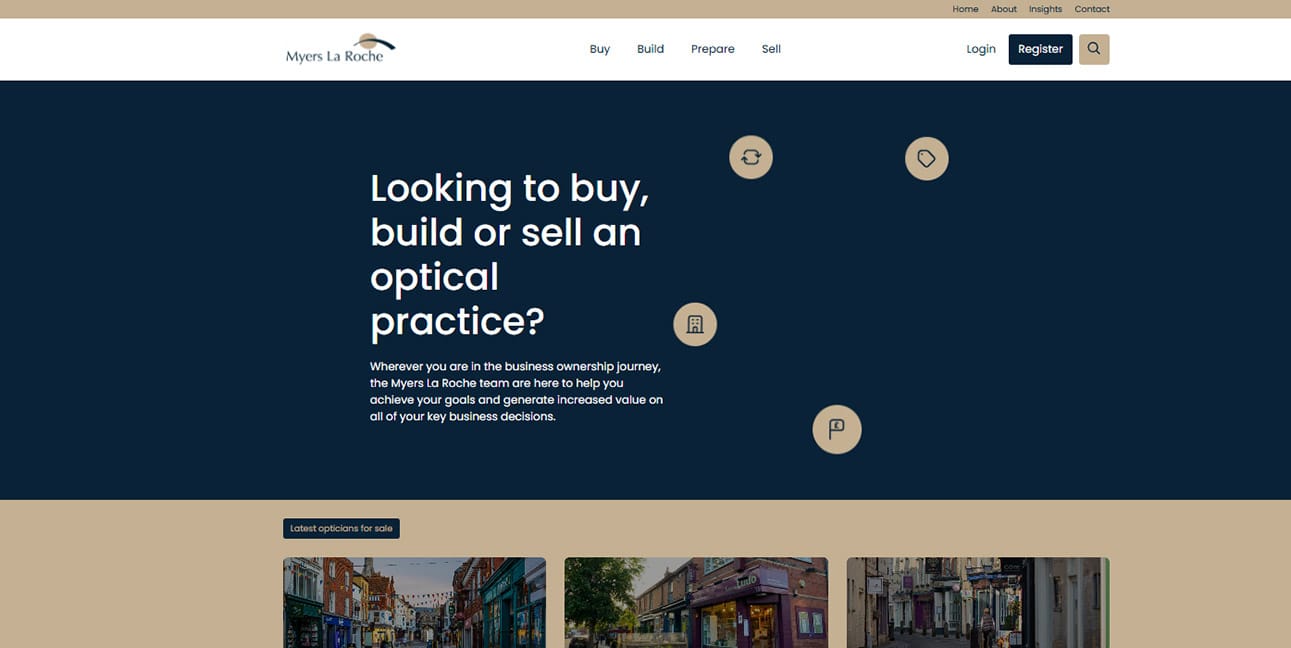Key Insights
Having worked in the healthcare space for more than two decades (and successfully diversifying from ophthalmic practices into audiology clinics around eight years ago) expanding into another parallel vertical healthcare market is not entirely new to me and the rest of the team. As anticipated, the move into podiatry has been an extremely exciting, challenging and rewarding journey so far. Now, a year and a half into our entry into the UK chiropody market, it is time to take a step back and take stock about what we have learnt, what has surprised us, what we have achieved – and where we are heading.
Entry into this new parallel vertical (healthcare) market comes with a significant number of knowns and unknowns.
The knowns include:
- A steep learning curve
- The ability to ask “silly questions” about why things are done in certain ways. (In the podiatry space, my team and I like to call these existing ‘tendoncies’ rather than existing tendencies!)
- An initial level of pushback when we start to question current business practices (when we compare them with how podiatrist’s ‘optician’ and ‘audiology’ cousins run their private clinics).
Unknowns include:
- Politics within the sector
- Reliable business data for private clinic numbers
- Regional variations in human clinical resources
Where we are and what we have learned
Having been operating in the podiatry sector for a reasonable period of time now, our data set is growing, allowing us to benchmark practices and determine trends with increasing accuracy and insight, but it will take another 12 to 24 months until we have a data set as large and significant as we have in our other sectors.
In stark contrast to other healthcare sectors such as dentistry, optometry and audiology, where they are extremely common, highly profitable podiatry practices are outliers rather than the norm. Whilst delivering excellent results for their patients, the majority of podiatry businesses in the UK are grossly underperforming in terms of creating yield and a happy lifestyle for their owners. There appear to be 2 main factors contributing to this situation:
Ignoring the headlines and focusing on the trend lines, it is clear that it does not (and should not) have to be this way.
- The rapidly aging UK population is causing demand for podiatry services to rise to record levels. This trend is being supplemented by increasing rates of obesity and diabetes across all age segments, again inflating demand way beyond anything ever seen before.
- A shortage of HCPC registered podiatrists means that recruitment is a major challenge in most locations, leading to some highly unfavourable associate arrangements (from the clinic owners’ perspective.)
- As in the hearing space – shortages of capacity and increasing NHS waiting times in many areas are leading to far greater demand in private/primary foot care.
- A general lack of investment in advice and business training by podiatry clinic owners
The underlying numbers behind these trends are not just compelling, they are undeniable:
With demand soaring and a shortage of chiropodists – if the private sector approaches this situation in the right way – the working environment and rewards within it have the capacity to be so much better for all. This will take a mindset shift and will require podiatry professionals to learn to value the services they deliver – and charge for them and run their clinics and their business models accordingly.
We are still gleaning a full understanding, but a level of distortion appears to come from CHCP registered podiatrists moving from secondary care to private primary care – and bringing with them some of the less favourable aspects of NHS culture with them. Further distortion also appears to be coming from an increasing number of foot health care professionals entering the marketplace.
In terms of delivering exit planning for podiatrists:
- We are successfully working with owners to help them restructure their business models, market positioning and pricing to deliver higher profits, more delegation and systemisation, better working environment and by extension of all of these – podiatry businesses that are more attractive to buyers and that will command a higher price when taken to market in the future.
- Compared with the other sectors we work in; the podiatry clinic resale market appears to be immature and rudimentary. We are working hard to communicate to future clinic owners the genuine fact that starting a practice from scratch is generally a false economy (when the opportunity cost of the early months and years of low income) are factored in – when compared with buying an existing practice with the capacity to generate profits and with the benefit of proven systems from day one.
Despite the immature market, we have now successfully sold a number of clinics in different locations and of different scales:
- Deal sizes have been as small as £20k and as large as several hundred thousand pounds (for a single site.)
- Deal structures have varied considerably, from “full cash on completion” sales through to part-cash, part deferred payments.
- We have successfully completed clinic sales with both leasehold and freehold premises.
What the future holds
Over the next 18 months the team at Podiatry Business Central plan to:
- Extend our experience and knowledge to better serve clinic owners to achieve their goals and enjoy the optimal benefits of business ownership (at all stages of the clinic ownership journey.)
- Network with prospective future clinic purchasers to help them understand the benefits of owning their own podiatry business – and to provide them with the confidence and funding solutions to allow them to buy an existing practice when one comes up in their area.
- Match buyers and sellers and help them to negotiate and execute equitable deals for clinic transfers
Planned initiatives include:
- UK Podiatry Megatrends – a white paper we will write to signpost key future business trends in the sector to help owners plan strategically around them for the future.
- UK Podiatry Salary Survey – to better quantify regional remuneration levels for both HCPC registered podiatrists and Foot Healthcare Professionals
- Further research into Podiatry Recruitment and the future skills pipeline – we plan to research and signpost best practice for owners looking to recruit – and may actively add this as a service, if commercially and practically viable for Podiatry Business Central
Click here to find out more about Podiatry Business Central




